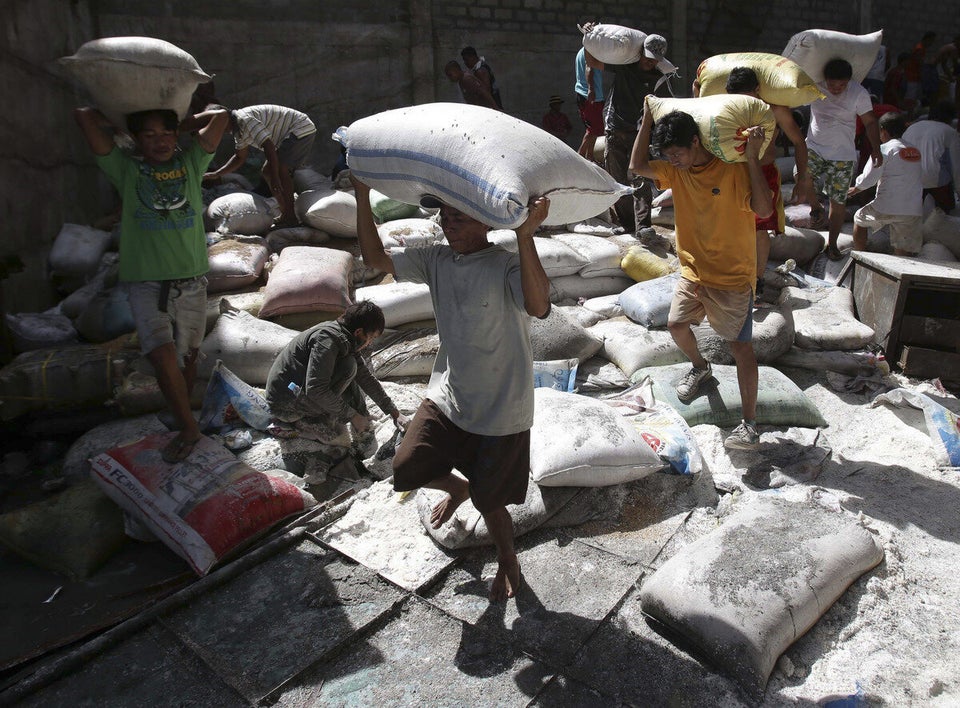The intensity of tropical cyclones striking East Asia has sharply increased over the past 30 years and major cities and ports such as Shanghai in China could face a greater threat from more powerful storms in future, a study published on Thursday shows.
The study by South Korean scientists says more powerful storms have been sweeping further north and maintaining their intensity right before landfall along the coast of East Asia, particularly China, Japan and South Korea.
If the trend continues, which many scientists say is likely as sea surface temperatures rise, millions of people in low-lying coastal cities, vital trade ports, billion-dollar tourist beach-fronts and farmlands are at greater risk from flooding, wind damage and storm surges.
That possibility worries insurers, aid agencies and national disaster relief bodies, particularly after the death and devastation caused by Typhoon Haiyan in the Philippines late last year. Cyclones are known as typhoons in East Asia.
"If the past changes of large-scale environments are evidence or a result of global warming, it can be assumed that, in the future, more catastrophic tropical cyclones will strike East Asia than ever before," one of the authors of the study, Chang-Hoi Ho of Seoul National University, said in a statement.
To find out just where they might strike, he said the next stage of his team's research was to use climate models to predict future tropical cyclone landfall intensity in these regions.
The study's findings bolster the work of major reinsurers such as Swiss Re and Munich Re, which have been warning about the rising risks from flooding and storm surges to Asian megacities and coastal factory zones. As Asian economies continue to grow, more people and assets are in the path of storms and rising seas.
The authors of the study analysed five separate data sets that documented the evolution of tropical cyclones across the north-west Pacific between 1977 and 2010. They found the storms reached their maximum intensity more frequently just before landfall in East Asia.
"That is to say, tropical cyclones could intensify or sustain their strength up to the brink of landfall," they write in IOP Publishing's journal Environmental Research Letters. Haiyan, for example, was a maximum category five storm when it stuck and was one of the strongest cyclones ever recorded.
The coastlines of China, Korea and Japan in particular have experienced increasingly stronger cyclones, which the researchers have attributed to increasing sea surface temperatures and a change in atmospheric circulation patterns in the region.
Changes in sea surface temperature and wind flows meant that cyclones were more likely to track along coastal seas from the South China Sea upwards, meaning that by the time the cyclones hit the coastlines along northeast Asia they had gathered more energy and were at their maximum intensity.
The researchers also found that in waters near Taiwan and Vietnam, there was no substantial change in the intensity of tropical cyclones. While they found an increase in the number of storms, many formed in the South China Sea too close to land to reach maximum intensity.
In addition to increasing sea surface temperatures in the western Pacific, the scientists found that more powerful storms were being fed by a strengthening of the Walker circulation -- a major ocean-based atmospheric circulation system that drives weather in the tropical Pacific.
According to the researchers, the Walker circulation strengthens as the difference in sea surface temperature between the warmer western Pacific and the colder central-eastern Pacific increases. This leads to changes in wind flows that push storms towards the northeast coast of Asia.
The findings complement other studies and confirms the likely trend of more intense storms if mankind keeps pumping large amounts of greenhouse gases into the atmosphere. Warmer sea surface temperatures lead to more moisture evaporating into the atmosphere and more fuel for storms.
A major climate study in 2010, based on the results of a range of computer models, concluded there was likely to be a substantial increase in the number of storms globally in the severe category range of three to five. Overall, storms would be between 2 and 11 per cent more intense by 2100 and rainfall would increase about 20 per cent near the centre, it predicted.
The 2010 study also found that, with the exception of the Atlantic, there might be a drop in the number of storms in the Pacific and around Australia, but the storms that did form would tend to be more dangerous.
Swiss Re last year published a flood hotspot assessment for China. It found that of all the high-growth markets, China had the biggest flood loss potential. The country's most at-risk manufacturing centres were Shanghai and the Pearl River Delta near Hong Kong.
It said 52 per cent of China's industrial production centres were at risk of river flooding and 25 per cent from storm surges caused by cyclones. For the Pearl River Delta, the threat of storm surges and river flooding could cause insured losses of $35 billion and $9 billion respectively.
ALSO ON HUFFPOST:
